The stunning retro space-age homes that are perfect for today

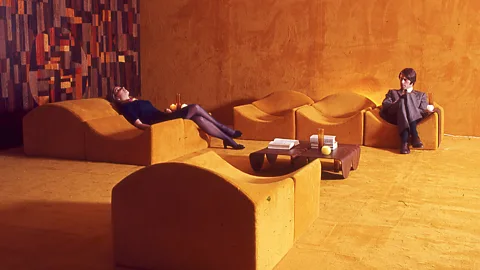 Ligne Roset/ Space Age Design by Peter Martin/ teNeues
Ligne Roset/ Space Age Design by Peter Martin/ teNeuesSpace-age style is skyrocketing in pop culture – in celebrities' homes, at global design fairs and even in blockbuster films. We look back at the stunning retro-futuristic origins of 2025's biggest interiors aesthetic, and ask, why now?
From aerodynamic cars to voluminous moonscape-style seating, popular culture and design is going cosmic. Some architects, designers, film-makers and galleries are looking, if not to Star Wars' "galaxy far, far away", then at least beyond the Earth's atmosphere for their inspiration.
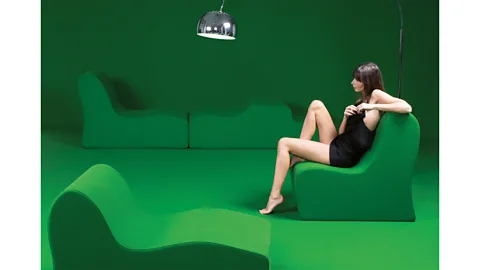 Mattia Tonelli/ Paradisoterrestre/ Space Age Design by Peter Martin/ teNeues
Mattia Tonelli/ Paradisoterrestre/ Space Age Design by Peter Martin/ teNeuesComing out in July, Marvel Studios' latest film, The Fantastic Four: First Steps, boasts a living room with a circular sunken sofa arrangement and glossy white circular side tables, and cars with oversized fins. Not your typical styling for an action-adventure blockbuster.
Down here in the real world, some major US interior designers have made the space-age aesthetic highly fashionable. LA- and Milan-based Giampiero Tagliaferri is among the designers who espouses a "California Space Age" aesthetic for the homes of tech moguls, art collectors, fashion creatives and pop stars. One such has a shiny white futuristic spiral staircase that wouldn't have been out of place in Stanley Kubrick's 1968 film, 2001: A Space Odyssey.
And US interior designer Kelly Wearstler's own Malibu beach house is full of space-age design, like the 1970s sofa and chaise longue by Afra and Tobia Scarpa, and the 1957 Digamma chair with its four splayed feet by Ignazio Gardella.
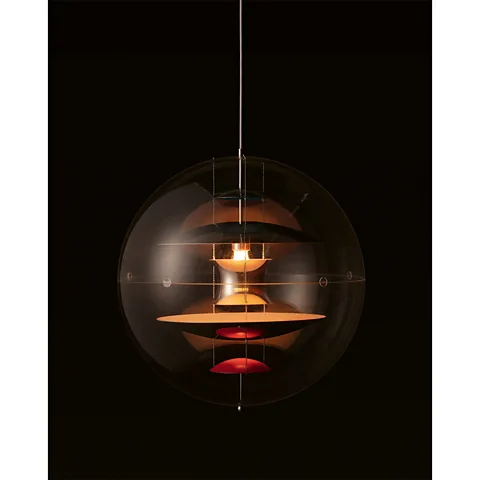 Joe Kramm/ Space Age Design by Peter Martin/ te Neues
Joe Kramm/ Space Age Design by Peter Martin/ te NeuesMeanwhile, furniture brands like Paulin, Paulin, Paulin have been quick to spot a trend, or perhaps are leading it. The family business is reissuing space-age designs from the early 1970s by influential French furniture designer Pierre Paulin. In particular, his Dune Ensemble modular seating arrangement with its echoes of a planetary surface has become a favourite among music-industry types and influencers. Famously private singer Frank Ocean, Red Hot Chili Peppers bassist Flea, rapper Travis Scott, Justin Bieber and Kim Kardashian are all reported to have one.
Galleries and design fairs are picking up on this retro-futuristic nostalgia. On show at Vitra Design Museum in Germany's Weil am Rhein is Science Fiction Design: From Space Age to Metaverse. It explores how the designers of the Space Age supplied film directors with the ideal furnishings for their science fiction movies: Olivier Mourgue's 1960s Djinn seating series in 2001: A Space Odyssey; Eero Aarnio's 1971 Tomato Chair in Barry Sonnenfeld's Men in Black (1997); and Paulin's 1966 Ribbon Chair in Denis Villeneuve's Blade Runner 2049 (2017).
At this spring's Milan Design Week, the hottest ticket was for the installation created by fashion house Loro Piana and the achingly cool furniture designers Dimorestudio. In La Prima Notte di Quiete, they presented a kind of idealised cinematic 1970s apartment which was pure Italo-Californian space-age chic: sunken conversation pits, round beds, cascades of cuboid wall-lights, retro seating, electric green carpet.
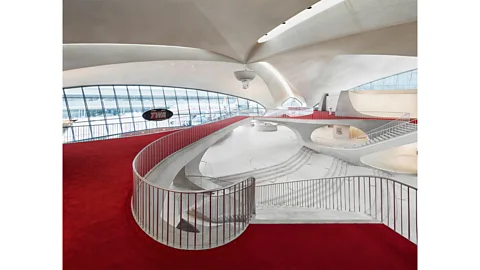 TWA Hotel
TWA HotelSpace-age styling was also on display at Brussels' vast Brafa Art Fair. Each year, Delen Private Bank, which has an extraordinary collection of Modernist art and mid-century furniture, creates a suite of rooms at the fair as the ultimate apartment. This time, its sassiest room was pure space age – red gloss walls redolent of Verner Panton's Visiona exhibitions, with that most space-age of symbols: the Joe Colombo Elda Chair.
The origins of space-age style
This aesthetic has its roots, of course, in the first space race, which set off when the Soviets launched the Sputnik satellite in 1957, and continued throughout the 1960s with Nasa's Apollo programme. These events dominated the global media, and people across the world uncynically embraced the idea that humanity had entered a new era. "It seemed only natural that objects and spaces should reflect this," Peter Martin, author of Space Age Design: Icons of the Movement, tells the BBC.
With that backdrop, pre-war design and architecture suddenly looked out of date. Instead, the height of cool was the forward-looking sophistication of Eero Aarnio's 1963 Pallo or Ball Chair, ideally placed within a modernist home.
And it wasn't just furniture that leant into this space-age fever. Cars grew massive tailfins and airports began to resemble spaceships, like Eero Saarinen's TWA Flight Center in New York.
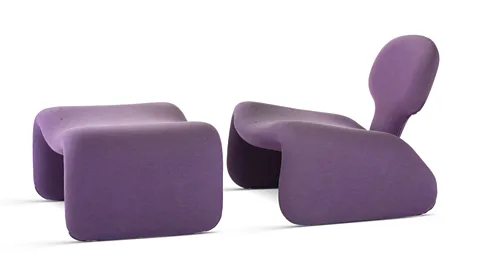 Vitra Design Museum/ Jurgen Hans/ VG Bild-Kunst Bonn 2024
Vitra Design Museum/ Jurgen Hans/ VG Bild-Kunst Bonn 2024The trend accelerated with the moon landing at the end of the 1960s, and was reflected in TV and cinema. As well as 2001: A Space Odyssey, there was the iconic TV series Star Trek. In music, there was the Telstar single by the Tornadoes, and in fashion, several designers unveiled futuristic looks, including Paco Rabanne's iconic 1968 gold-chain Space Age dress.
There was also a practical reason for space-age design's popularity. It arrived with the advent of newly available materials, which had been developed in the war years and by the mid-1950s were finding their way into the workshops and studios of a new generation of designers.
For a while, plastic became synonymous with what we now think of as space-age designers. As Cristina Bargna, head of the Plastic Design Collection at Design Museum Brussels says in Martin's book, "In the 1950s, plastic represented possibilities, freedom, and joy. The freedom of shape; the possibility to create new furniture, to furnish new houses – a material that spoke to a new generation with the desire to live differently. Plastic was no longer a material that imitated what had come before. It started to embody the future; it created a completely new vision of reality."
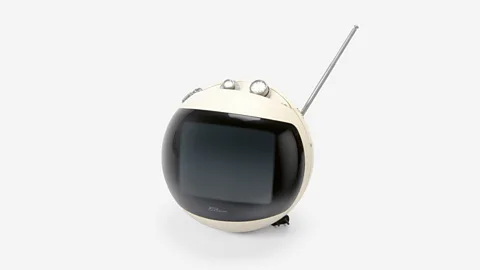 Design Museum Brussels
Design Museum BrusselsThe other factor was mass production, which exploded during the war years for munitions, and then pivoted afterwards towards the burgeoning consumer culture. Savvy designers allied themselves with manufacturers. "The story of space-age design is in many ways a story of partnership between designers and manufacturers. Joe Colombo with Kartell; Eero Saarinen with Knoll; Verner Panton with Vitra; Peter Ghyczy with Elastogran," Martin writes in Space Age Design.
The peak of space-age design was in the immediate aftermath of the moon landings. "We know now that what looked like the start of things was in reality the end of things – we'd soon leave the moon and not return," Martin says, "But in the euphoria of the moon landings, things could not have looked more different."
At this point, space was the hottest topic, and global mainstream interest injected a massive shot of energy into space-age design and influence. It was seen everywhere, from David Bowie's Space Oddity – released a month after the landing – to JVC's space-helmeted Videosphere television.
And at a time when it seemed reasonable to assume that we'd be living in space within a few decades, designers considered how that might look.
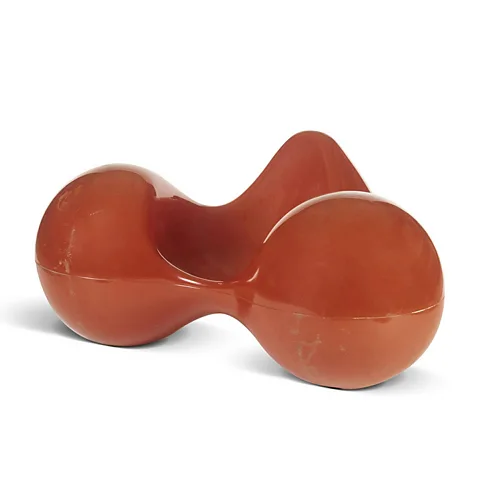 Vitra Design Museum/ Roland Engerisser
Vitra Design Museum/ Roland EngerisserSofa design is a classic example. "Modular sofas had been around since the 1940s, but now they became sprawling and heroic, made for fabulous, futuristic lifestyles," Martin says. Rigid forms were out; enveloping, sensual, organic shapes were in. These were statement sofas that could belong in a Lake Como villa or on a space station orbiting the moon. Sitting upright was out; sofas were for slumbering, socialising or partying.
Out of this era came two giants that can be claimed for the space-age design movement: the iconic 1973 Togo designed by Michel Ducaroy for Ligne Roset; and the 1972 Camaleonda by Mario Bellini for B&B Italia. Both are still in production and remain extremely sought after.
And now the aesthetic is back. A sense of rediscovery, a hefty dose of nostalgia and a new sense of competition are all contributing to the revival of space-age design.
Nostalgia for the space race itself was kicked off in 2022, when Buzz Aldrin's Apollo 11 jacket sold for $2.8m (£2.3m) at Sotheby's in New York. Since then, space memorabilia has become a huge market. And last year, Tom Hanks' immersive show The Moonwalkers – recreating the Apollo mission – was the main attraction at London's Lightroom.
"This is in large part because of what that era represents – the pioneering sensibility of western nations that embraced the future with a sense of mission, " Martin says.
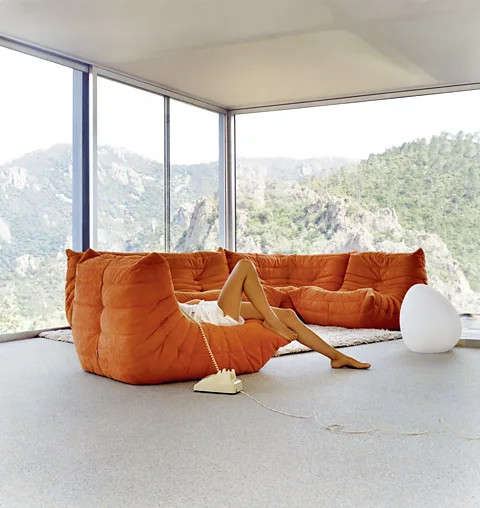 Ligne Roset/ Space Age Design by Peter Martin/ te Neues
Ligne Roset/ Space Age Design by Peter Martin/ te NeuesFeeding into this interest in the first space age is the fact that we are now on the cusp of the second. Nasa's Artemis programme is about to return to the moon, with humans slated to land in 2027 for the first time since the 1970s. This time, the race is international, with China, India and private US companies competing for space primacy.
This is manifesting in vibrant design from several regions, such as the work of Chinese-born Peng Zheng (now senior product designer at Zoom in California) and Eason Zhu (founder of Hangzhou's multidisciplinary design studio Fununit Design & More).
Designers like these, says Martin, are "creating a vision of new ways of living that are entirely unhindered by the baggage of what went before".
Space Age Design: Icons of the Movement by Peter Martin is published by teNeues.
--
If you liked this story sign up for The Essential List newsletter, a handpicked selection of features, videos and can't-miss news, delivered to your inbox twice a week.
